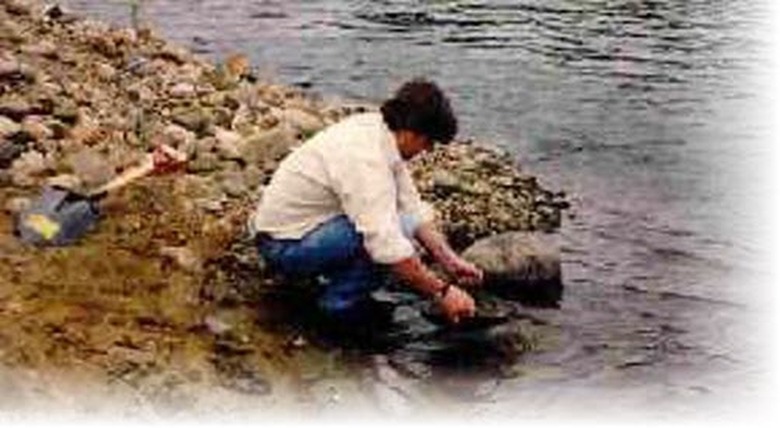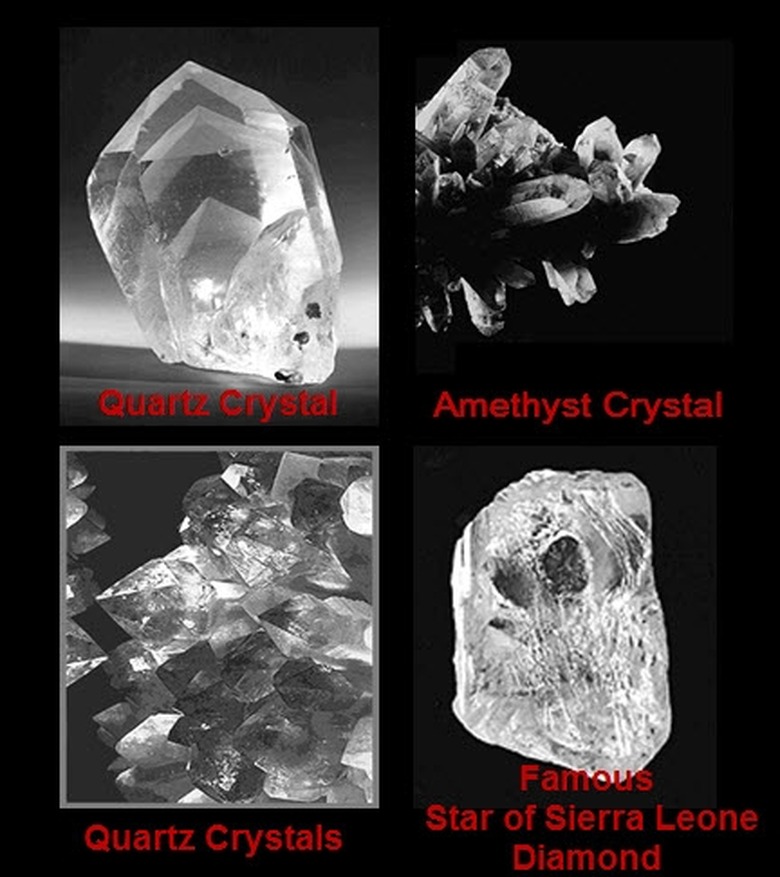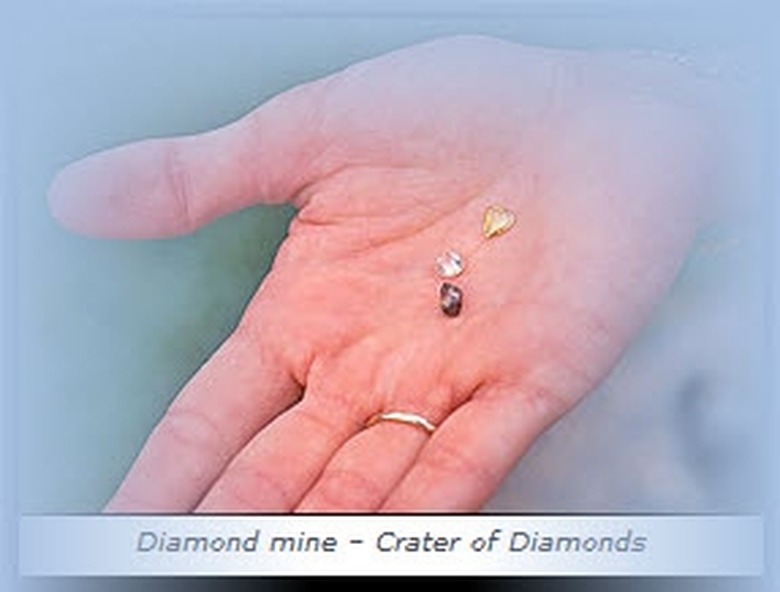What Type Of Soil Are Diamonds Located In?
All of Earth's minerals found in present-day mining formed from the primordial soup that was once our slowly cooling planet. As the minerals formed into distinct types, they were pushed up through openings in the Earth's newly forming crust, leaving a "pipe" (trail) that, even if faint to the untrained eye, points to the highest concentrations of a given mineral — in this case diamonds. Over time, glaciations, earth movement and volcanic activity may have broken and scattered the pipes, but they are not lost to diamond miners.
Pockets of Minerals
Pockets of Minerals
Diamonds of value do not form within Earth's magma, but rather deeper in the earth under greater pressure. However, diamonds do form in mineral crystal deposits found in igneous rock. This rock is in the upper mantle of the Earth's crust, and crystallizes with the help of minerals known as peridotites and eclogites under specific temperature and pressure conditions.
Diamonds are most abundant in stable layers of the Earth's crust called cratons, and are usually found in cratons that are at least 570 million years old.
Streambed Indicators
Streambed Indicators
Pipes of the minerals kimberlite and lamproite are often present in the Earth's upper mantle, and they carry diamond crystals in their pipe "trails." These minerals are resistant to weathering and are denser than quartz sand. As such, kimberlite and lamproite float to and gather in streambeds. Because these pipes tend to carry diamonds in them, geologists term them "indicators" when found in gravel-dense streambeds.
Good Hosts
Good Hosts
Diamond indicator mineral deposits are quite limited in variety. Typically, any indicator minerals that result from peridotite and eclogite in the Earth's upper mantle are considered good hosts. For example, when a kimberlite pipe has low iron and high magnesium levels, it may be an indication that conditions were present for favorable oxidation preservation properties as the diamond crystal rose through the magma to the Earth's surface.
Crater of Diamonds State Park
Crater of Diamonds State Park
Farmer John Huddleston discovered diamonds in 1906 on his property in Murfreesboro, Arkansas. The diamonds were brought to the surface 95 million years ago by an volcanic pipe. In 1972, after years of mining, Arkansas created the Crater of Diamonds State Park at the site. The park's policy is "finders-keepers" if any diamonds, precious gems or other minerals are found. Diamonds in the colors of the rainbow exist in the park, and staff members are available to help identify finds. The park is free to the public.
Diamond Mining
Diamond Mining
India was foremost in the manufacture and production of diamonds in earlier centuries, when the gems were used as embellishments on religious icons. India's diamond deposits were alluvial in nature, but have since been depleted.
Diamonds are mined in Africa, Russia, Australia and even Canada. Geologists suspect large diamond deposits exist in Antarctica but agree that mining will not take place on that continent.
Cite This Article
MLA
Lindstrom, Deb. "What Type Of Soil Are Diamonds Located In?" sciencing.com, https://www.sciencing.com/type-soil-diamonds-located-5409589/. 24 April 2017.
APA
Lindstrom, Deb. (2017, April 24). What Type Of Soil Are Diamonds Located In?. sciencing.com. Retrieved from https://www.sciencing.com/type-soil-diamonds-located-5409589/
Chicago
Lindstrom, Deb. What Type Of Soil Are Diamonds Located In? last modified March 24, 2022. https://www.sciencing.com/type-soil-diamonds-located-5409589/





